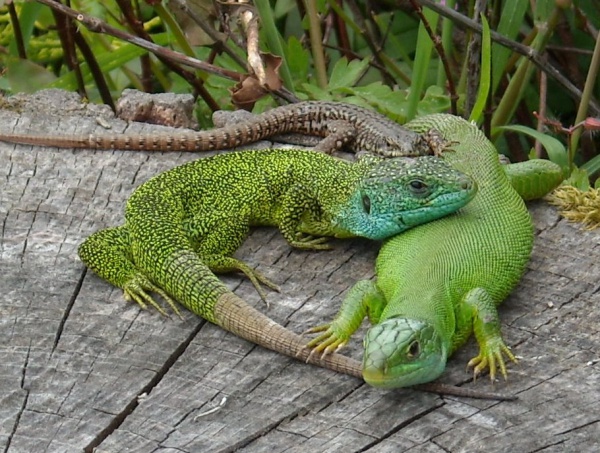Facts About Green Lizard
The European green lizard is a striking reptile native to the midlatitudes of Europe, spanning from Slovenia to Turkey and Ukraine. You might spot one basking on a sunlit rock or lawn, or perhaps hiding among bushes.
There is some debate among scientists about whether Lacerta viridis and Lacerta bilineata are distinct species. Genetic studies suggest that they might be. These lizards can grow up to 15 cm in body length, not including their tail, which is twice as long as their body. Remarkably, they can shed their tails to evade predators.
Male European green lizards are distinguishable by their larger heads and green coloring with spots, while females are slimmer with a more uniform coloration. This species is native to southeastern Europe, ranging from southern Germany to western Turkey, but they've also been introduced to places like the United States and Britain. They can live at elevations up to 2,200 meters and prefer habitats with dense bushy vegetation, woodlands, hedgerows, and bramble thickets.
Regarding their diet, European green lizards are not particularly fussy. They feed on insects, small invertebrates, fruit, birds' eggs, and even small mammals. In the spring, females lay between 6 and 20 eggs, which hatch after 2 to 4 months. The young lizards mature swiftly, reaching adulthood in just a year.
The International Union for Conservation of Nature (IUCN) lists the European green lizard as "Least Concern" due to its wide range and adaptability. Although there are no major threats to their population, the use of pesticides in Turkey could pose a problem.

 Serbia
Serbia